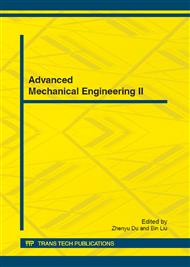p.37
p.42
p.46
p.51
p.57
p.63
p.68
p.73
p.78
Parameter Identification of Tailplane Iced Aircraft Based on Maximum Likelihood Method
Abstract:
Based on the maximum likelihood method, this paper analyzed the influence of tailplane icing on aerodynamic parameters by parameter identification. A nonlinear longitudinal flight dynamics model for aircraft was built, and an identification system was constructed using maximum likelihood method. According to the flight test data of DHC-6 aircraft, the aerodynamic parameters of clean aircraft and two different cases of iced aircraft with particular ice shapes on the tailplane were identified. Eventually, the results of the identification show that the tailplane icing has several adverse effects on the aircraft flight characteristics, including flight performance, elevator effectiveness, stability and safety.
Info:
Periodical:
Pages:
57-62
Citation:
Online since:
July 2012
Authors:
Price:
Сopyright:
© 2012 Trans Tech Publications Ltd. All Rights Reserved
Share:
Citation:


